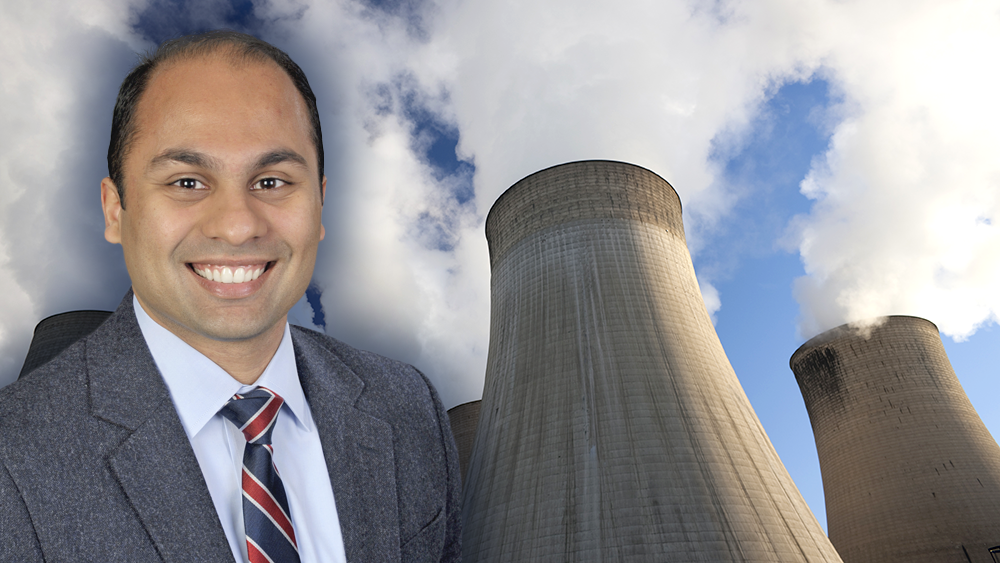
Texas A&M University researchers are working on a new method of measuring temperature during phase-change processes with the potential to outshine current state-of-the-art techniques.
By developing a non-contact method of measuring temperature in the vapor phase during a phase-change process through optical diagnostic techniques, the research can avoid the negative impacts of current practices.
The phase-change heat transfer process is the transition from one phase of matter — solid, liquid or vapor (also referred to as gas) — to another. It is associated with the absorption or emission of heat, which can then be used for a number of applications.
The process is used in a broad range of areas, including power generation, buildings, communications systems, food processing systems and the chemical processing industry.
"There is a level of uncertainty about the physics of transport near a liquid-vapor interface during phase-change processes such as evaporation and condensation,” Dr. Dion Antao said. “The current state-of-the-art uses physical probes, like thermocouples, to measure the temperature in the vapor phase, but such a probe affects, disturbs or biases near-interface transport processes. A non-contact temperature measurement in the vapor phase will enable us to probe some of these fundamental near-interface transport phenomena in a spatially resolved manner."
Antao, an assistant professor in the J. Mike Walker ’66 Department of Mechanical Engineering, is a 2021 recipient of the National Science Foundation Faculty Early Career Development (CAREER) Award, which will support his research into phase-change heat transfer processes. The CAREER Award honors promising junior faculty as they pursue cutting-edge research while simultaneously advancing excellence in education.
Antao said he is honored by the recognition associated with the award and looks forward to implementing his research plan exploring the intersection of phase-change heat transfer and plasma physics and engineering.
"I plan to leverage this funding to understand fundamental material-phase transitions during plasma discharge events in dense fluids (specifically in liquids), develop novel optical diagnostic techniques for the phase-change heat transfer community and use plasma discharges in liquids to manipulate and enhance heat and mass transfer processes in energy conversion and water treatment applications," Antao said.
Working at the intersection of a diverse set of fields, including phase-change heat transfer, plasma physics and engineering, surface chemistry and liquid-solid-vapor interfacial phenomena, Antao hopes his group’s work can have a wide-reaching impact on numerous facets of daily life.
"Phase-change heat transfer processes are at the center of most aspects of our lives," Antao said. "We propose to develop theory and tools to understand the fundamentals of these phase-change phenomena better, and then manipulate, tune and enhance such processes to optimize thermal and mass transport in various energy conversion and water treatment technology."
The biggest challenge facing the research, Antao said, will be to combine the fields of plasma physics/engineering and phase-change heat transfer. In doing so, Antao plans to develop new methods of guiding and controlling the energy conversion process.
"I have great students in my research group — as does our department — and I know that together we will overcome the challenging nature of the proposed work," he said.
Antao said he hopes his research will challenge everyone on his team to learn new concepts by developing and validating new hypotheses with the hope of ultimately impacting society through the development of technology that utilizes energy and water resources more efficiently.
"To our knowledge, this approach has never been attempted before and, hence, I expect it to challenge us," Antao said. "There is nothing more exciting in our job than innovating to solve challenging problems and learning new fields and techniques."
Antao said that while he is excited about his research's potential, he also hopes to have a lasting impact on the next generation of engineers through his work.
"Beyond the project-specific research outcomes, I hope that we can leverage our novel research to excite the next generation of students through our educational outreach activities, get them thinking about energy conversion and sustainability, and possibly show them that mechanical engineering is more than cars and gears," Antao said.
The educational component of his CAREER Award includes working with students at the elementary and middle school levels through outreach programs, incorporating the team's findings into the department's curriculum and providing research opportunities to students from high school through the graduate program.
"We would like to leverage this unique combination of plasmas and heat transfer to excite the next generation of students and get them interested in STEM careers from an early age," Antao said. "As researchers in the area of energy and energy conversion, the education components are a unique opportunity to get the next generation of our society thinking about energy conversion and the various process efficiencies so that we can be good stewards of the energy and water resources we have."